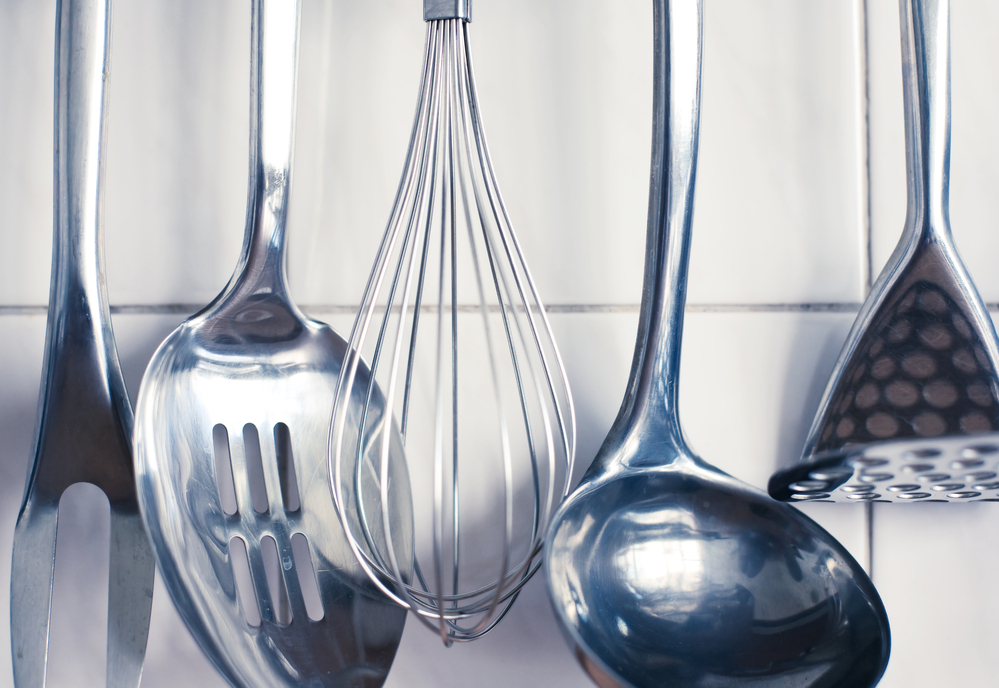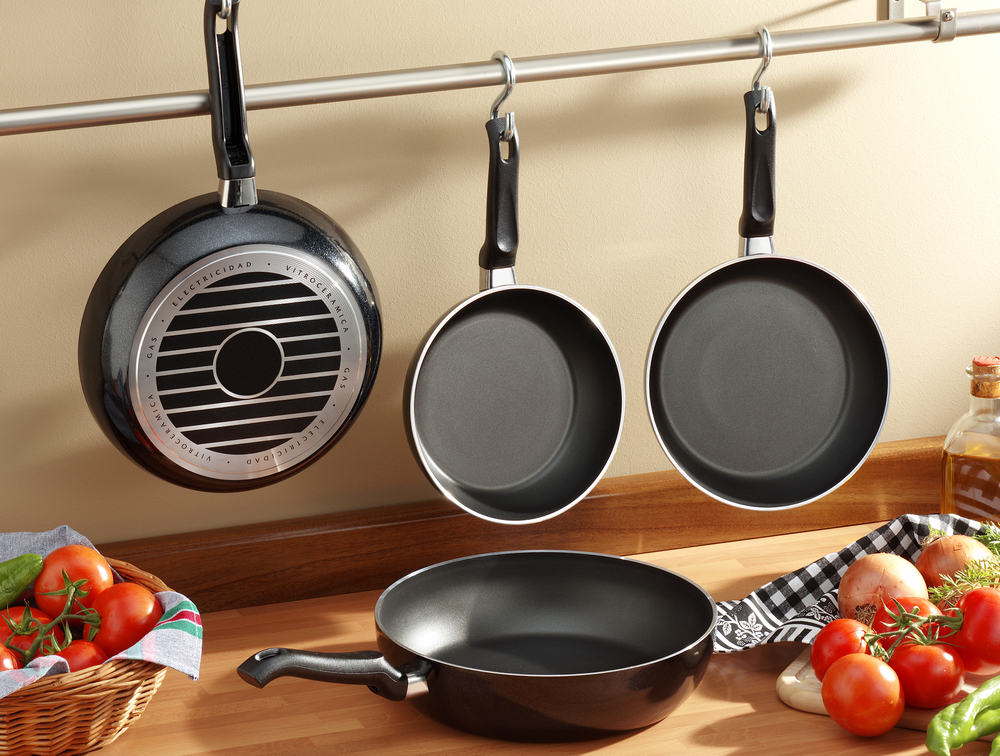When people purchase a nonstick pan, a lot of the time they think that this means they’ll never have to use oils again. However, this couldn’t be farther from the truth. Even though nonstick pans are designed with a coating to prevent sticking, this does not give the texture and flavor that oils can provide.
However, you won’t want to use any oil cooking oil in a nonstick pan. You will want to use cooking oils with a high smoke point, that are healthy for you and have a great flavor to impart to the food.
The best oils to use on a nonstick pan are:
- Coconut Oil
- Peanut Oil
- Canola Oil
- Grapeseed Oil
- Olive Oil
All of these oils have a high smoke point and they either have a very neutral flavor or a delicious flavor to enhance your recipes.
What is a Nonstick Pan?
A nonstick pan is a type of cookware that is specifically designed to work with foods that are prone to sticking. Some of the most common foods that are cooked in nonstick pans are eggs and chicken. Both of these foods are especially prone to sticking and normally need to be fried in a lot of oil to prevent sticking.
By using a nonstick pan, you can avoid using as much oil when cooking certain foods. These pans are coated in a material, usually Teflon, which causes them to repel foods and keep them from sticking.
One thing to keep in mind with this is that nonstick pans usually cannot be used at high temperatures. This can cause the coating to come off and make its way into the food where it could be toxic.
However, even with a nonstick pan, there may be times when you want to use oils. Using oils on your nonstick pan can be especially helpful with super stick-prone foods. You may also want to include oil to add additional flavor to your dish.
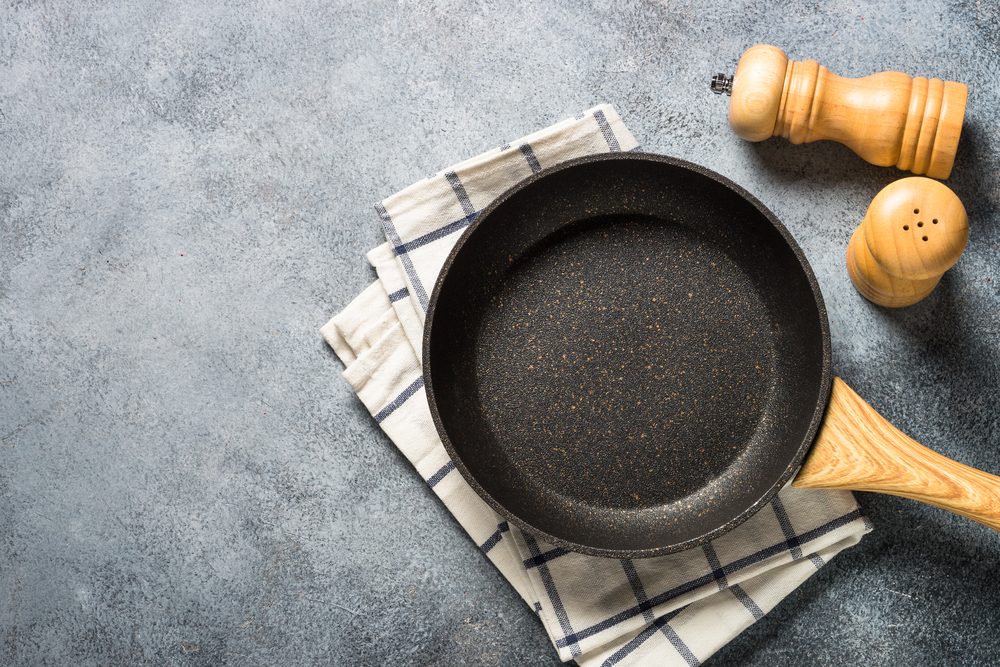
What Kind of Oil is Best for a Non-Stick Pan?
At this point, you may be wondering what is the best oil to use in nonstick pans. The main features that you want to look for are oils with a high smoke point and those which either have a neutral flavor or a good flavor. With a nonstick pan you should never be going too high in temperature, but regardless it’s a good idea to prevent the oil from burning.
Use this link for better content ideas. Link
Coconut Oil
One of the most highly recommended oils to use in your non-stick pan is coconut oil. This oil is very popular in the clean eating and health foods community, but it isn’t as well known outside of that. However, this shouldn’t be the case as coconut oil is a very versatile oil that works well for multiple dishes.
Coconut oil is one of the few fat sources that, like butter, can be used for both frying in liquid form and baking. This is because since coconut oil is solid at room temperature, it can be used as the fat source in baked recipes without causing them to collapse when they cool.
Cheaper coconut oil can often have a mild coconut flavor which some people like, but others completely detest. If this is an issue for you, try purchasing refined coconut oil which will be completely flavorless.
Coconut oil also has a relatively high smoke point at 450 degrees Fahrenheit.
Peanut Oil
Another popular oil that you can use with your nonstick pan is peanut oil. This oil is made from, you guessed it, peanuts and is one of the most popular oils used for frying in the fast food industry. Unlike some other oils, peanut oil retains its fairly neutral flavor even when it is heated to high temperatures.
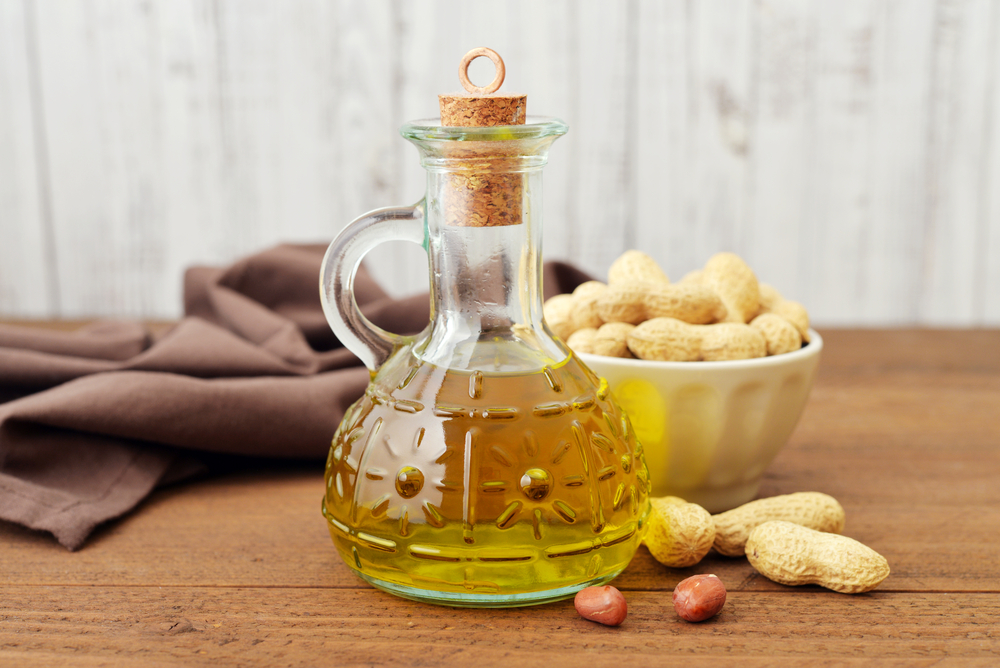
When you shop for peanut oil, you’ll want to make sure that you are purchasing refined peanut oil. You may also see unrefined peanut oil and smoked peanut oil, but you want to stay away from those when you can.
Unrefined peanut oil is potentially dangerous for those with allergies since it has not been purified as many times as refined oil. Smoked peanut oil is actually not intended for cooking at all. It has a strong, smokey peanut flavor and is intended to be used as an ingredient to add flavor to a recipe.
Just like coconut oil, peanut oil has a high smoking point of 450 degrees Fahrenheit. This makes it ideal if you are planning on frying your foods at a high temperature.
Canola Oil
The next oil that you can use in your nonstick frying pan is canola oil. Canola oil is one of the most common oils used in cooking and chances are you already have it in your kitchen.
One of the best things about canola oil is that it is a super versatile oil. It has a neutral enough flavor that you can use it to bake a cake without worrying that the flavor of the oil will impact the final flavor of the cake.
This oil also has a relatively high smoke point at 400 degrees Fahrenheit meaning that you can use it for a lot of different purposes. Just make sure you don’t go above 400 degrees, which could occur when baking, or you’ll run the risk of burning the oil which will completely change the flavor and ruin the recipe.
Another benefit of canola oil is that it is actually full of omega-3 fatty acids and unsaturated fat that is considered good for your heart. It is low in the saturated fats that most other oils contain. This makes it a great choice if you are trying to reduce the amount of saturated fat in your diet while still enjoying the occasional fried meal.
Grapeseed Oil
If you’re looking for a more flavorful oil that will actually enhance the flavor of your dishes, give grapeseed oil a try. This oil is made from grape seeds that have had the oil extracted. This can be done by using a chemical method called hexane extraction or by cold-pressing the seeds. The cold-pressed oil will typically be more expensive but will result in higher quality and more flavorful oil.

This oil has a greenish color and is often described as having a fruity or nutty flavor. This means that if you cook with it, you will be imparting that flavor onto your meal.
Some of the people’s favorite things to make with grapeseed oil are pasta dishes since you can fry the vegetables in them and incorporate them into the sauce for extra flavor. It also makes a great salad dressing with the addition of a few spices.
It has a lower smoke point of 390 degrees Fahrenheit, but this should still be high enough for you to cook most dishes. You may just want to avoid using this oil when baking to avoid burning it.
Olive oil
The last oil that you can use for cooking in your non-stick pan is olive oil. This type of oil is usually made from cold-pressed olives and is considered a healthy oil with lots of fats that your body needs to thrive. It is also a non-hydrogenated oil which is basically a fancy word for saying that it hasn’t been chemically altered.
The flavor of olive oil can be described as fruity with a blend of different herbs. The higher quality olive oil you purchase, the better flavor it will have. Generally speaking, try to go for a tinted glass bottle as this helps to keep the olive oil fresh as long as possible.
You will also want to pick extra virgin olive oil. This is the oil that is pulled from the first pressing of the olives and is typically the highest in antioxidants. It also has the best flavor and is typically the olive oil used in restaurants to top bread and salad.
Extra virgin olive oil usually has a smoke point of around 410 degrees Fahrenheit. This means that it will be good for most things, but should be avoided for extremely high temperatures as it could burn and ruin the food.
How to Use Oil on a Nonstick Pan
Now that you know which are the best types of oils to use in a nonstick pan, it’s time to learn how to use oil on a nonstick pan. Unlike with regular pans, you won’t be using the oil to prevent sticking, so you’ll mainly be using it for flavor and texture.
- Measure Out Your Oil
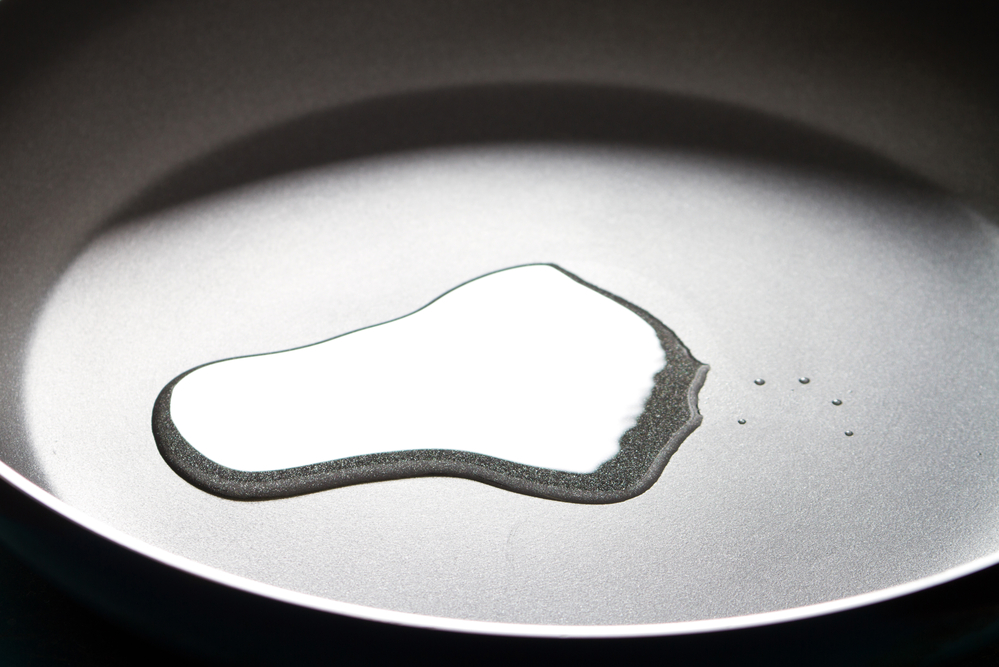
The first step will be measuring out the oil. If you are looking for a fried food with crispy edges, you will likely want to add several tablespoons to the pan. This will allow you to have enough oil to pour it over the edges of the food and ensure that they are as crispy as possible.
If you only want to add flavor, you will be good sticking with 1 to 2 tablespoons of oil. Make sure to spread the oil around the pan before you add the food.
- Preheat Before Adding Oil
- Add oil as you go!
Chances are, you won’t get the amount of oil right the first time and it is always best to air on the side of caution and add less oil than you thought you needed. It’s easy to add in more oil throughout the cooking process, but it’s pretty impossible to reduce the amount. Adding too much oil can make your food greasy and unappetizing.
Benefits of Using Oil on a Nonstick Pan
Although using oil on a nonstick pan isn’t strictly necessary, there are some reasons that you may find it beneficial to add some oil.
The first is that using an oil can add quite a bit of flavor to your food. Oils like grapeseed oil and olive oil are super flavorful and can add a depth of flavor to your foods that would be difficult to achieve normally.
Adding oil can also help to improve the texture of your food. After all, there’s no real substitute for the crispiness that adding oil to your bacon can provide. You won’t need to use as much oil which will help to make it healthier, even if you still use it to crisp up the edges.
Conclusion
If you’d like to use a nonstick pan but want a delicious fried egg or crispy fried onions, not using oil won’t cut it. You will not need to use as much oil, but you will still need some to achieve the flavor and texture that you want.
The best oils to use if you want a super neutral flavor are coconut oil, peanut oil, and canola oil. If you’d like your oil to add extra flavor to your food, try grapeseed oil or olive oil. Both of these oils have delicious fruity and nutty flavors to enhance the flavor of your meal.



